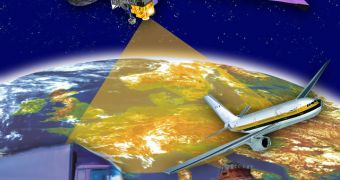A new type of space-based navigation signals has become available for use in Europe starting today, March 2. The EGNOS Safety-of-Life signal was just declared available for all those interested.
This marks the first time that the European aviation industry is able to access this service, which is bound to improve the critical task pilots have of guiding their airplanes vertically during landing approaches.
The system could help reduce instances in which additional approaches are needed before an airplane can be safely put on the ground, say officials with the European Space Agency (ESA).
According to the official announcement, the EGNOS signal is managed via a strong network of ground stations that process the signals sent back by three satellites in Earth's orbit.
What EGNOS (European Geostationary Navigation Overlay System) does is simply augment and sharpen the accuracy of signals sent across Europe by the American Global Position System (GPS).
This satellite navigation system only provides top resolution to the US government and affiliated agencies. The rest of the world receives only approximate readings. Europe wanted to boost the quality of those signals until it can get Galileo online.
Galileo is the European satellite navigation system that is currently in the early testing stage. Two validation satellites are already in orbit, and the first components of the actual constellation are about to start launching this year.
“We are very proud of the large effort ESA put into EGNOS, and very pleased that it can now be used for the purpose it was initially designed for,” explains the head of the ESA EGNOS project team, Philippe Michel.
“Through EGNOS, satellite navigation guidance is being made available for the first time in the vertical as well as horizontal domain,” adds Francisco Salabert, who is based at the European Organization for the Safety of Air Navigation (Eurocontrol).
“EGNOS offers the aviation industry the means to provide accurate and safe vertically guided approaches to smaller airports where a conventional precision landing system is not today economically viable,” he adds.
“Its introduction will reduce delays, diversions and cancellations of flights into and out of these airfields while improving passenger safety,” the expert concludes.

 14 DAY TRIAL //
14 DAY TRIAL //